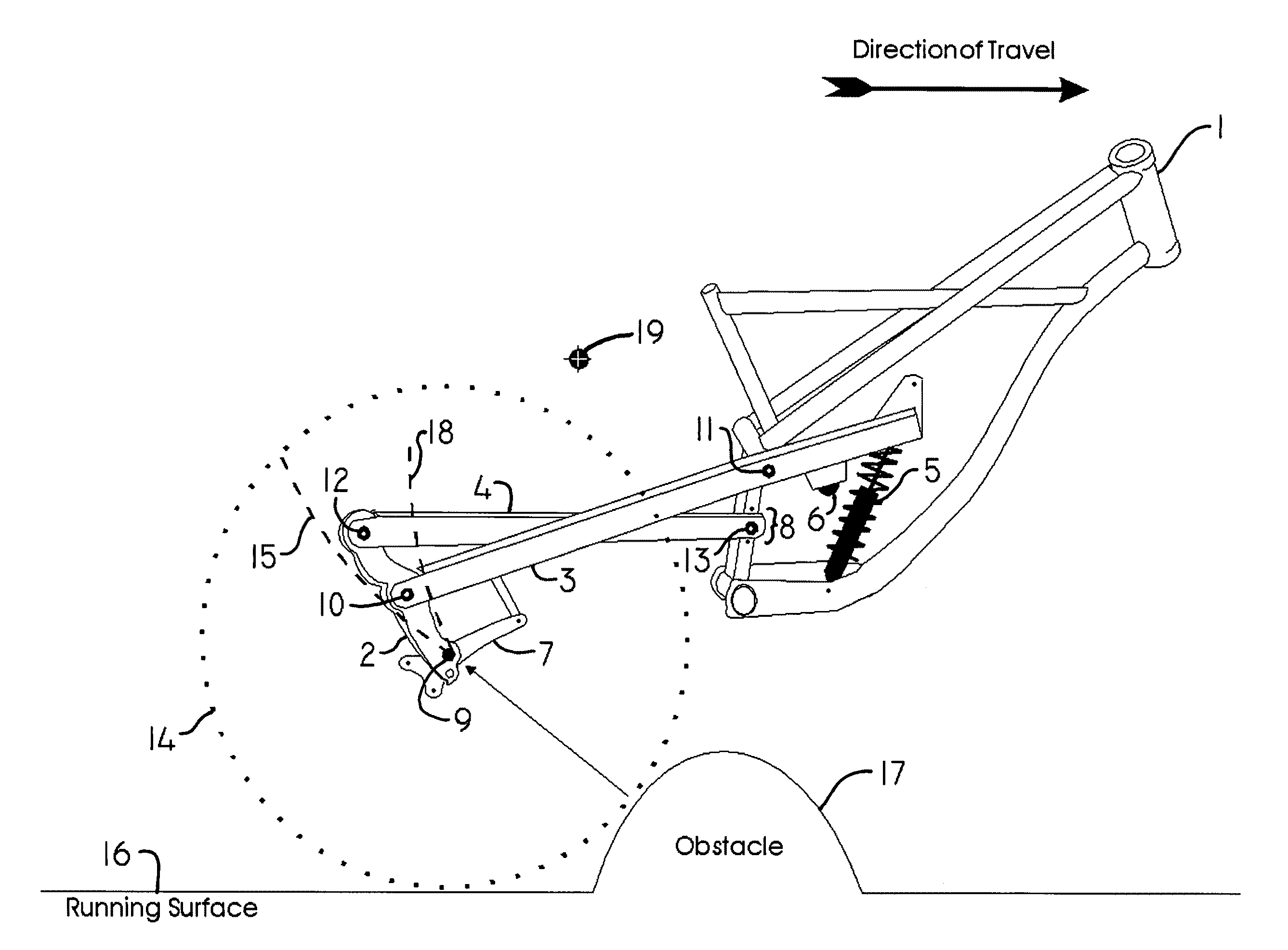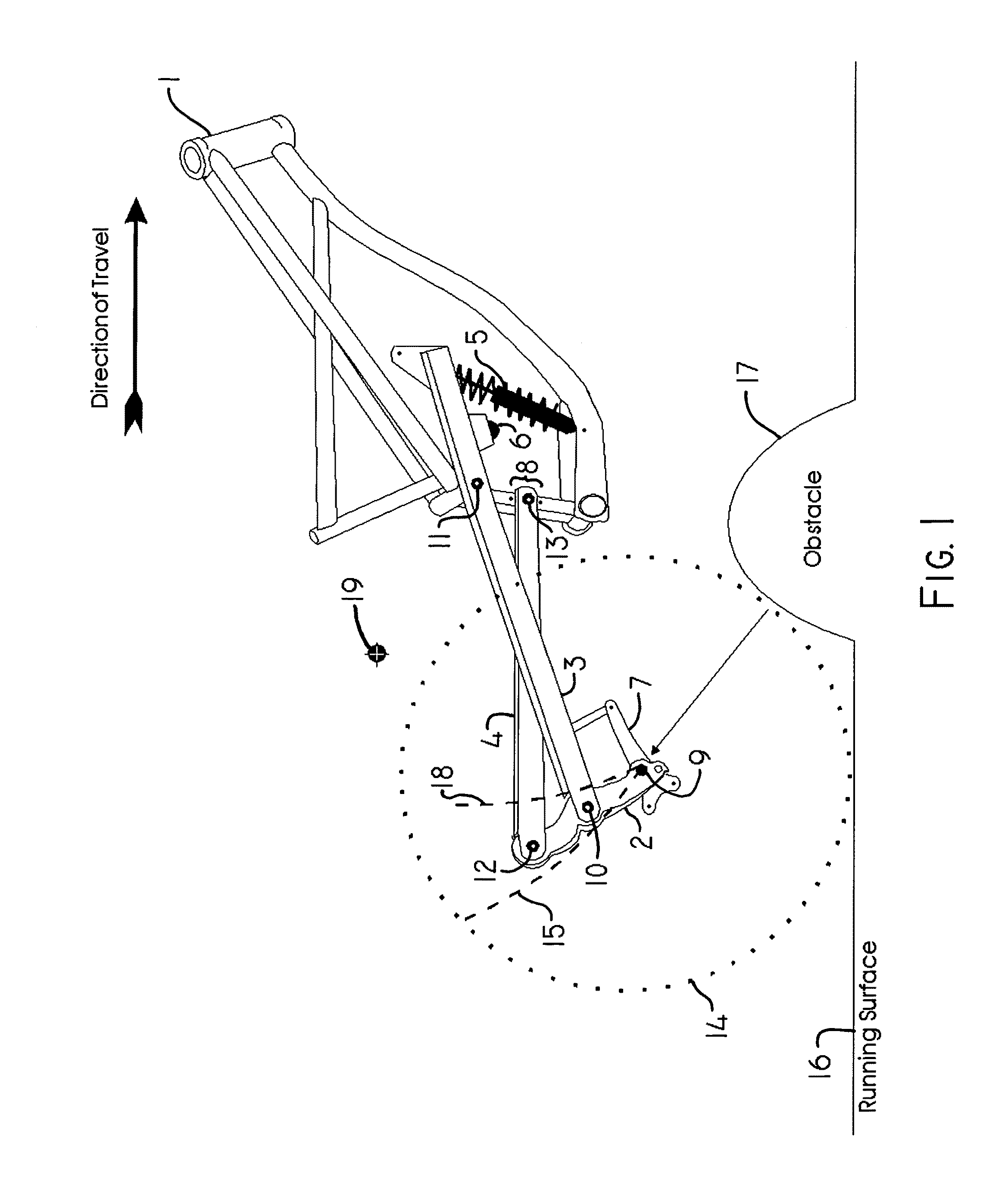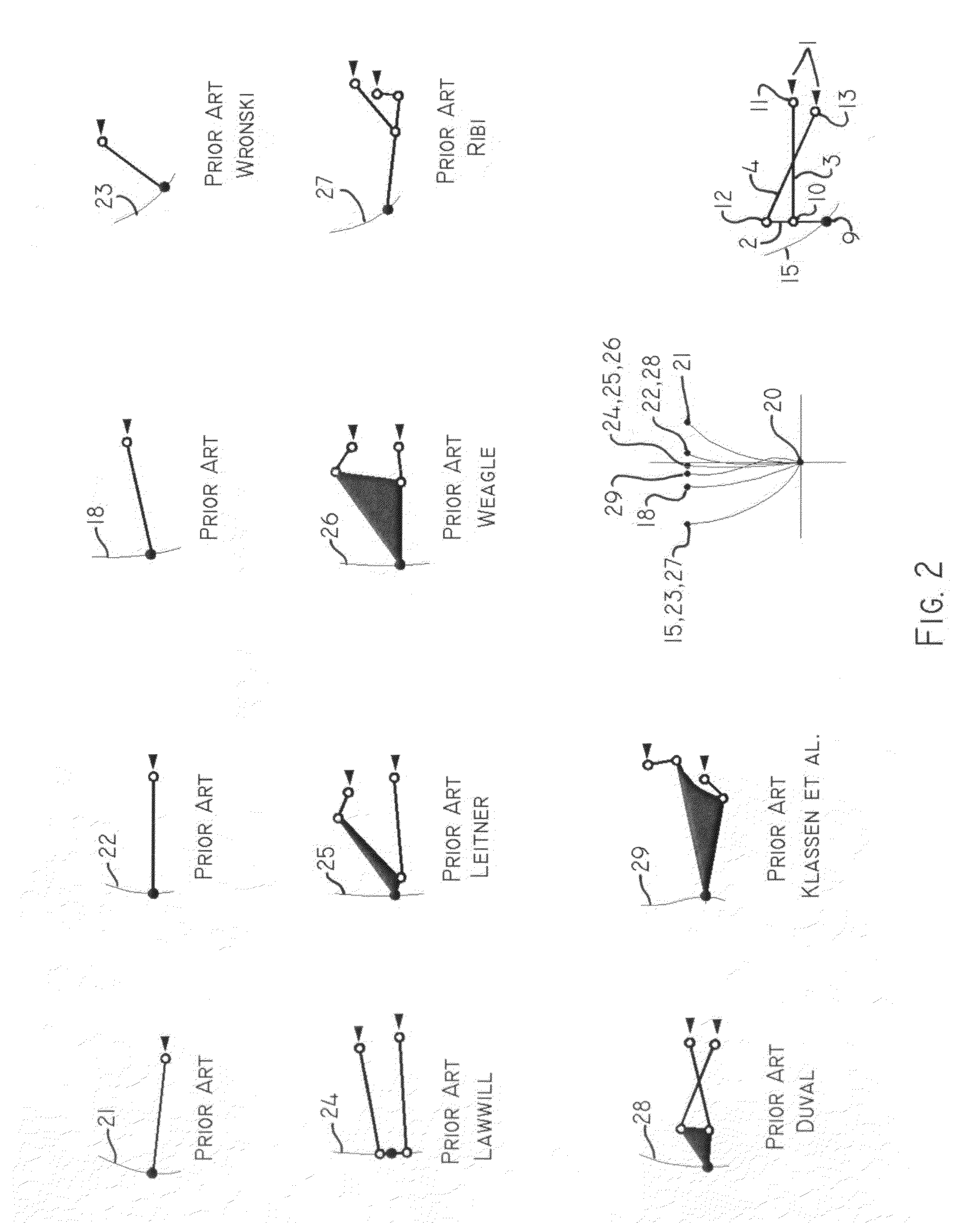Vehicle suspension linkage
a technology of suspension linkage and vehicle, which is applied in the direction of resilient suspensions, motorcycles, bicycles, etc., can solve the problems of not being able or practical, unable to achieve smooth pedal stroke, and unable to observe the activation of suspension from pedaling, so as to prevent appreciable suspension activation or pedal feedback, the effect of effective rigidity
- Summary
- Abstract
- Description
- Claims
- Application Information
AI Technical Summary
Benefits of technology
Problems solved by technology
Method used
Image
Examples
Embodiment Construction
[0068]Referring to FIGS. 1 & 37, I have used the illustration of a bicycle comprising a frame 1 and a rear suspension linkage system comprising a rearmost vertical and slightly rearward member 2 pivotally connected near its mid point 10 to a trailing arm member 3 also pivotally connected 11 near the vertical mid-point of the frame 1, this rearmost member 2 also pivotally connected at its uppermost point 12 to another trailing arm member 4 that crosses the first trailing arm member 3 and pivotally attaches to the frame 1 at a point 13 on the vehicle's frame 1 below the mid point mounted member 3. The rear wheel 14 is attached to the protrusion of the rearmost member 2 at a point 9 below the cross-linked trailing arm members 3&4. A spring and shock absorber unit 5 is connected to store and return absorbed energy in a damped fashion. A tension compensation pulley 6 is present to isolate chain tension forces from the suspension. A brake mechanism 7 is pivotally connected about the axle ...
PUM
 Login to View More
Login to View More Abstract
Description
Claims
Application Information
 Login to View More
Login to View More - R&D
- Intellectual Property
- Life Sciences
- Materials
- Tech Scout
- Unparalleled Data Quality
- Higher Quality Content
- 60% Fewer Hallucinations
Browse by: Latest US Patents, China's latest patents, Technical Efficacy Thesaurus, Application Domain, Technology Topic, Popular Technical Reports.
© 2025 PatSnap. All rights reserved.Legal|Privacy policy|Modern Slavery Act Transparency Statement|Sitemap|About US| Contact US: help@patsnap.com



